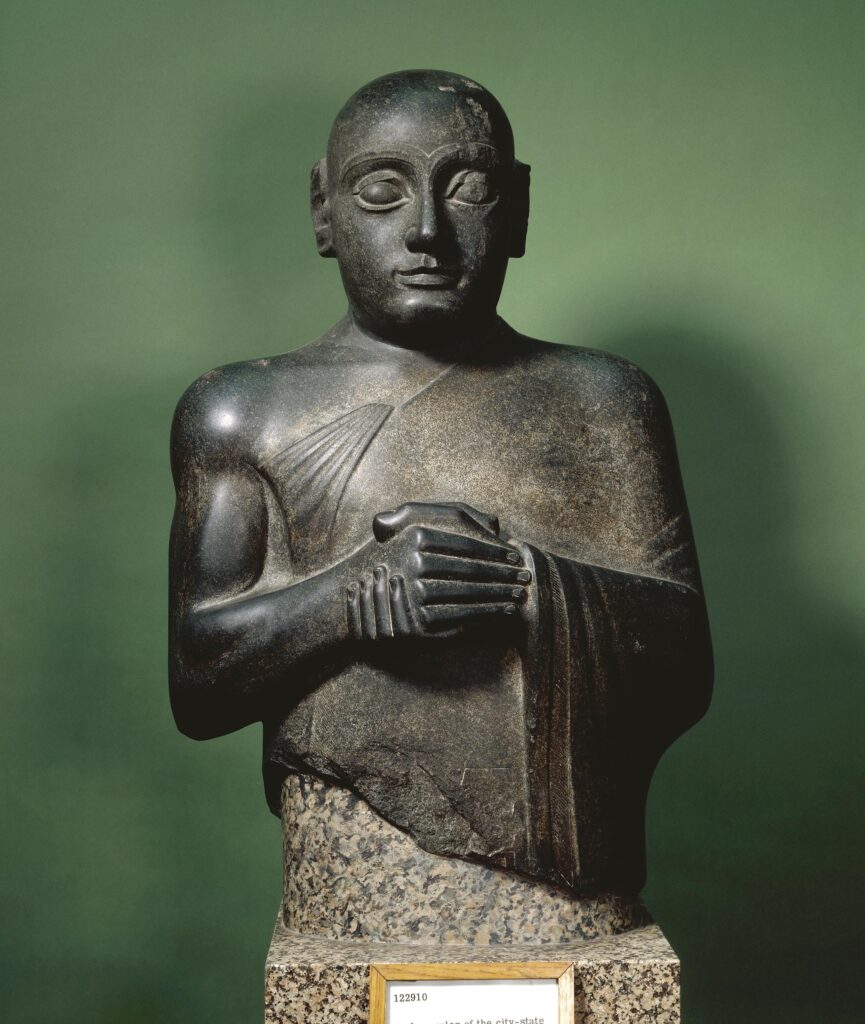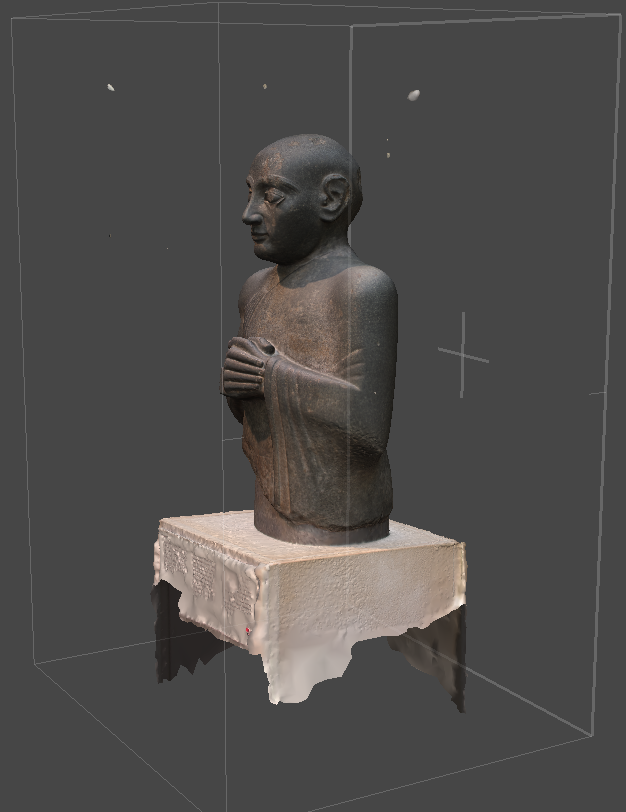
statues of Gudea
The project I have chosen to embark on for my midterm project this trimester is a 3D model of one of the 27 statues of Gudea, though not all of them are completely intact, many of them carry the same inscription “Gudea”. These statues represent a highly important figure in the state of Lagash between c. 2144 BC and 2124 BC as Gudea was the ruler of the region during this era. The significance of these artifacts is found in the rare level of sophistication for this time seen in the statues’ details. Additionally, these were used for religious rites such as prayers made in the ruler’s stead, people even offered sacrifices to these idols. The installation of this series I have modeled here is labeled Statue ‘V’ and currently sits in the British Museum. Throughout this course, I have found that the creation of 3D models speaks to the heart of what Digital Humanities is, and strives to be, thus I thought what better way project is there than one that not only increases access to avenues of humanities research in such an interactive way, and makes it publicly available?
To create this project, I used images of the statue provided by Austin Mason. The main work that needed to be done for the model itself was removing images that were not of the statute and images where the lighting was too bright, or the quality was too low. Lastly, for information on the idol and its historical significance, I used this Wikipedia page. These images were, of course, taken in the British Museum, and from them, one can conclude that at the time, the statue was more accessible than museum exhibits often are. The photographer was able to take photos from all angles of the figure, which unfortunately is often not the case in exhibitions with such delicate artifacts. I used an image from the official British Museum website in the design of this WordPress site.
Once I had all of the pictures downloaded, the next step was to use Agisoft Metashape to create a 3D model of the statue using those images. I then cleaned the model, getting rid of any unnecessary edges, smoothing out parts here and there, as well as properly cropping the model, all of which was done in Metashape. Lastly, I covered the base of the model, as it was hollow and the original artifact holds nothing of significance at this angle. For the model to be of any academic or exploratory value, it must be cleaned and polished, ensuring that it reflects the original as closely as possible. For the embedded model specifically, I imported the .obj file from Metashape into Blender to ensure that the textures would be properly applied to the model when embedding to this page.


Making use of the familiarity we gained with WordPress through this class, I decided to publish my midterm using this site. The user-friendly interface allowed me to quickly design a page to host the 3D model of Gudea all while sharing the process of making it. The colors and theme were based on the backgrounds used in the British Museum’s photoshoot for the statue. Using these images of the model from different angles emphasizes the project’s focus and gives insight into the process of creating it, which I feel is an integral part of the community-building aspects of the digital humanities field. I wanted to make the embedded model itself the last thing the viewer would see in hopes that they would value the process more than the final product, as learning about what they would be interacting with allows for a more intimate understanding of the model in the end.
Through this model, one can gain a better understanding of the southern Mesopotamian religious practices during the time of Gudea’s rule, and make inferences as to how those practices changed after his reign ended. The intricacy of the statue in and itself provides insight into sculpting methods and combined with the number currently found, speaks to this historical figure’s importance. An interactive model allows users to explore the artifact from each angle and create their interpretation of the original through consideration of how it has been preserved, where damage is present, and why certain materials may have been used in its creation. Rather than a mere data science project, a model like this relates to Digital Arts & Humanities through how it uses the data points generated by the algorithm. In place of the data being manipulated and presented in a way that supports a particular interpretation, this method allows the freedom for users to find and form their own interpretations and paves the way for the community discussions that define the digital humanities.